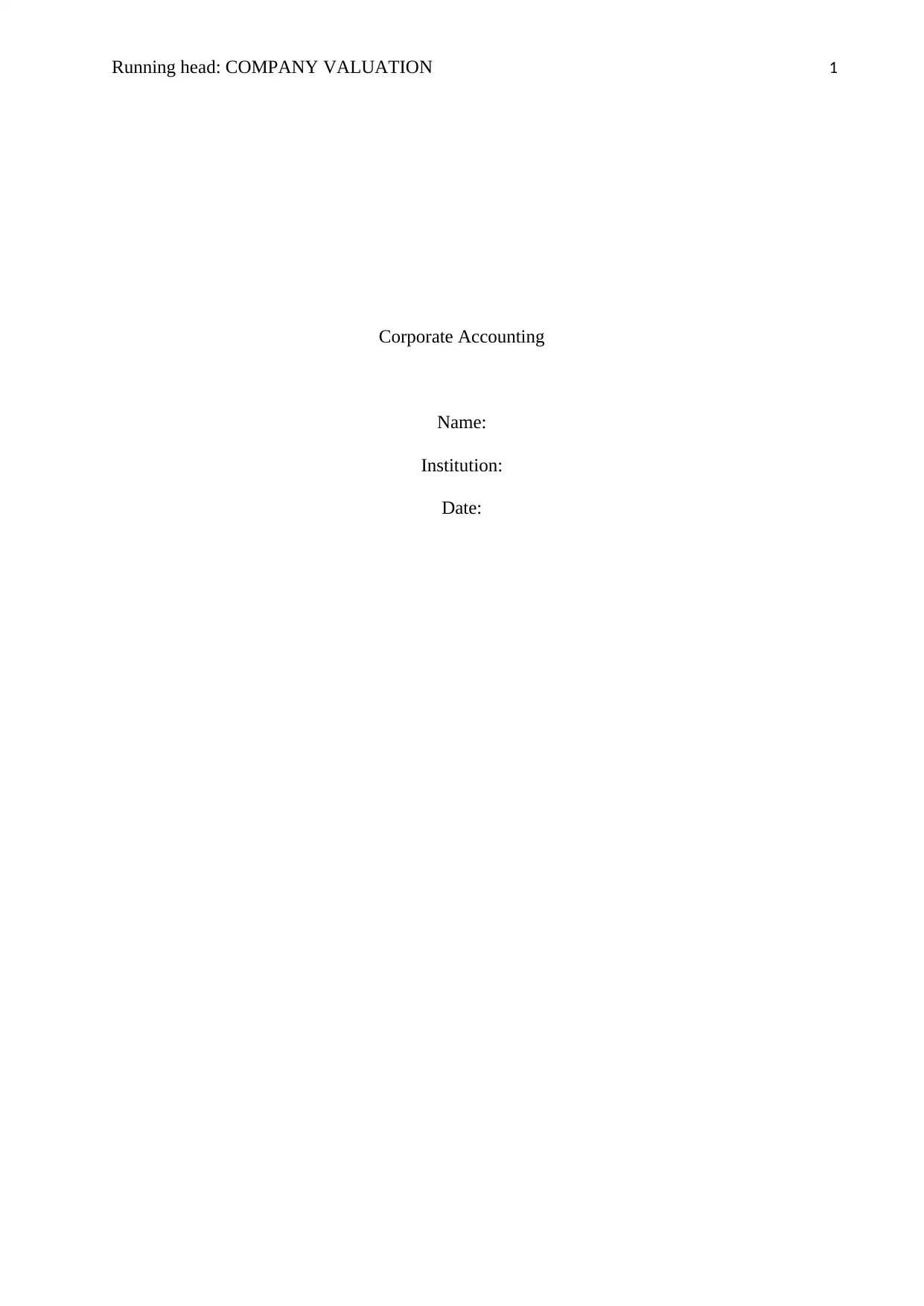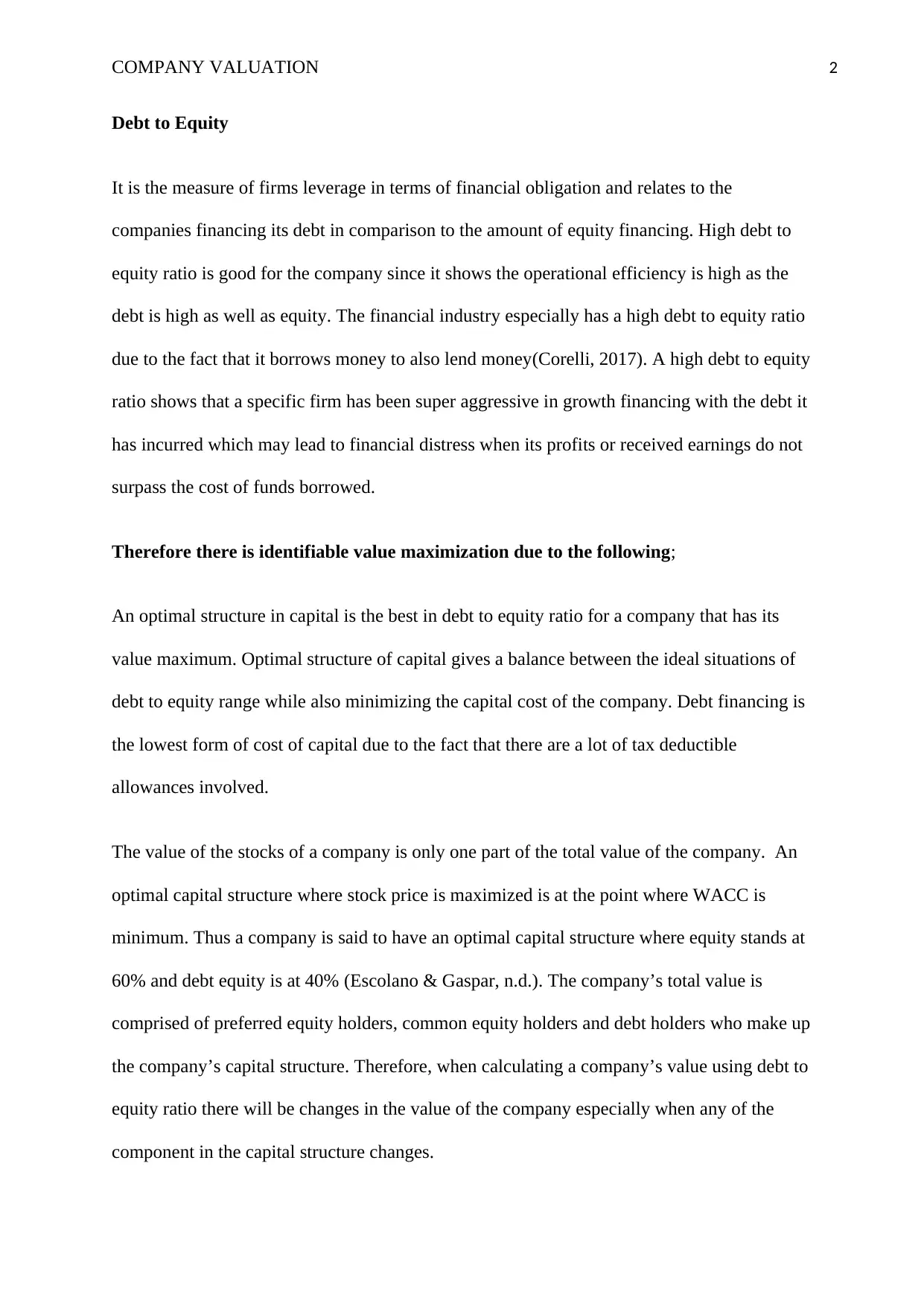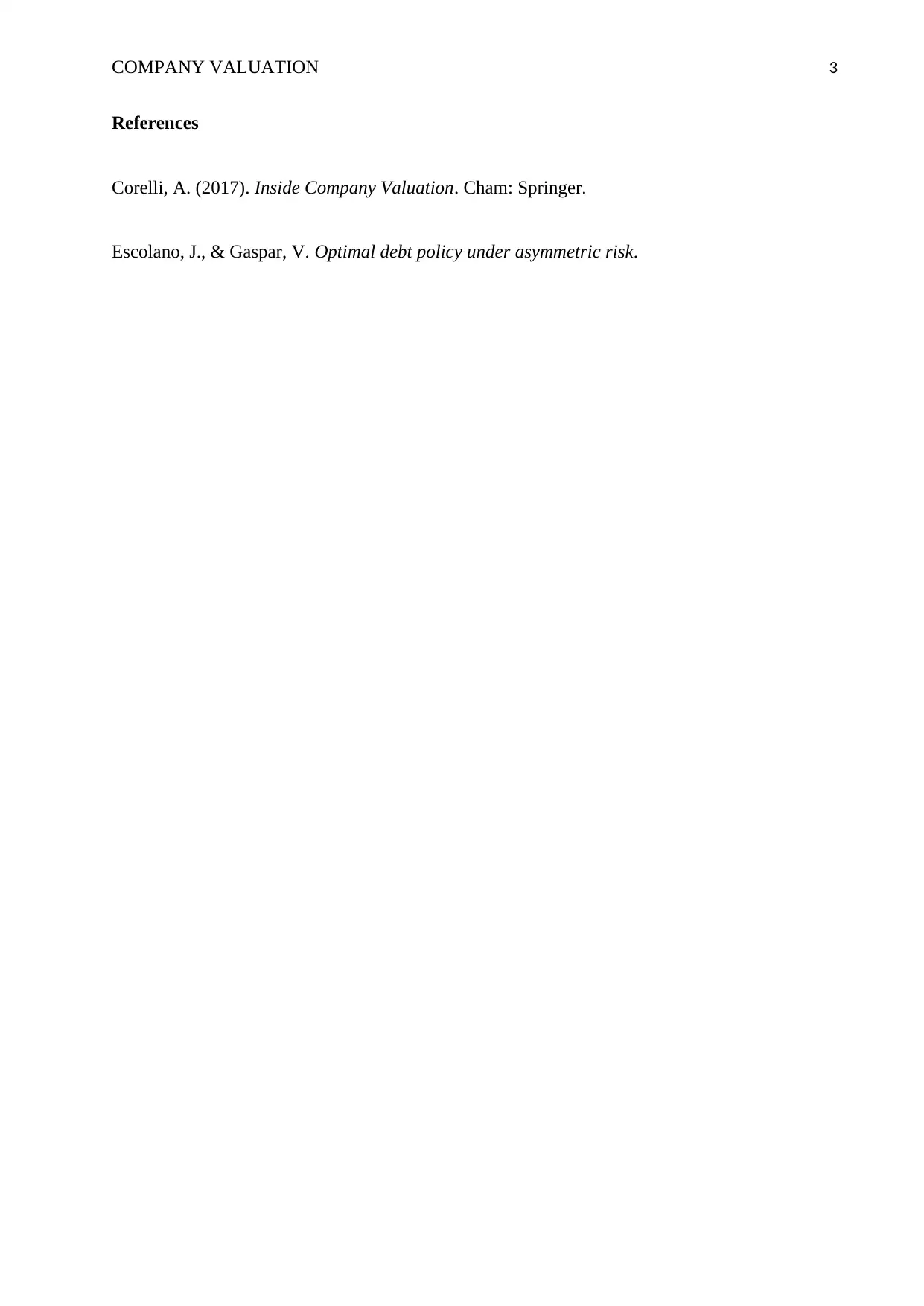Company Valuation Report
VerifiedAdded on 2020/02/19
|3
|402
|35
Report
AI Summary
This report discusses the concept of company valuation with a focus on the debt to equity ratio. It explains how this ratio measures a firm's leverage and its implications for financial health. The report highlights the importance of an optimal capital structure in maximizing company value, detailing the balance between debt and equity financing. It also references key literature on the subject, providing insights into the financial strategies employed by companies.

Running head: COMPANY VALUATION 1
Corporate Accounting
Name:
Institution:
Date:
Corporate Accounting
Name:
Institution:
Date:
Paraphrase This Document
Need a fresh take? Get an instant paraphrase of this document with our AI Paraphraser

COMPANY VALUATION 2
Debt to Equity
It is the measure of firms leverage in terms of financial obligation and relates to the
companies financing its debt in comparison to the amount of equity financing. High debt to
equity ratio is good for the company since it shows the operational efficiency is high as the
debt is high as well as equity. The financial industry especially has a high debt to equity ratio
due to the fact that it borrows money to also lend money(Corelli, 2017). A high debt to equity
ratio shows that a specific firm has been super aggressive in growth financing with the debt it
has incurred which may lead to financial distress when its profits or received earnings do not
surpass the cost of funds borrowed.
Therefore there is identifiable value maximization due to the following;
An optimal structure in capital is the best in debt to equity ratio for a company that has its
value maximum. Optimal structure of capital gives a balance between the ideal situations of
debt to equity range while also minimizing the capital cost of the company. Debt financing is
the lowest form of cost of capital due to the fact that there are a lot of tax deductible
allowances involved.
The value of the stocks of a company is only one part of the total value of the company. An
optimal capital structure where stock price is maximized is at the point where WACC is
minimum. Thus a company is said to have an optimal capital structure where equity stands at
60% and debt equity is at 40% (Escolano & Gaspar, n.d.). The company’s total value is
comprised of preferred equity holders, common equity holders and debt holders who make up
the company’s capital structure. Therefore, when calculating a company’s value using debt to
equity ratio there will be changes in the value of the company especially when any of the
component in the capital structure changes.
Debt to Equity
It is the measure of firms leverage in terms of financial obligation and relates to the
companies financing its debt in comparison to the amount of equity financing. High debt to
equity ratio is good for the company since it shows the operational efficiency is high as the
debt is high as well as equity. The financial industry especially has a high debt to equity ratio
due to the fact that it borrows money to also lend money(Corelli, 2017). A high debt to equity
ratio shows that a specific firm has been super aggressive in growth financing with the debt it
has incurred which may lead to financial distress when its profits or received earnings do not
surpass the cost of funds borrowed.
Therefore there is identifiable value maximization due to the following;
An optimal structure in capital is the best in debt to equity ratio for a company that has its
value maximum. Optimal structure of capital gives a balance between the ideal situations of
debt to equity range while also minimizing the capital cost of the company. Debt financing is
the lowest form of cost of capital due to the fact that there are a lot of tax deductible
allowances involved.
The value of the stocks of a company is only one part of the total value of the company. An
optimal capital structure where stock price is maximized is at the point where WACC is
minimum. Thus a company is said to have an optimal capital structure where equity stands at
60% and debt equity is at 40% (Escolano & Gaspar, n.d.). The company’s total value is
comprised of preferred equity holders, common equity holders and debt holders who make up
the company’s capital structure. Therefore, when calculating a company’s value using debt to
equity ratio there will be changes in the value of the company especially when any of the
component in the capital structure changes.

COMPANY VALUATION 3
References
Corelli, A. (2017). Inside Company Valuation. Cham: Springer.
Escolano, J., & Gaspar, V. Optimal debt policy under asymmetric risk.
References
Corelli, A. (2017). Inside Company Valuation. Cham: Springer.
Escolano, J., & Gaspar, V. Optimal debt policy under asymmetric risk.
⊘ This is a preview!⊘
Do you want full access?
Subscribe today to unlock all pages.

Trusted by 1+ million students worldwide
1 out of 3
Related Documents
Your All-in-One AI-Powered Toolkit for Academic Success.
+13062052269
info@desklib.com
Available 24*7 on WhatsApp / Email
![[object Object]](/_next/static/media/star-bottom.7253800d.svg)
Unlock your academic potential
Copyright © 2020–2025 A2Z Services. All Rights Reserved. Developed and managed by ZUCOL.





